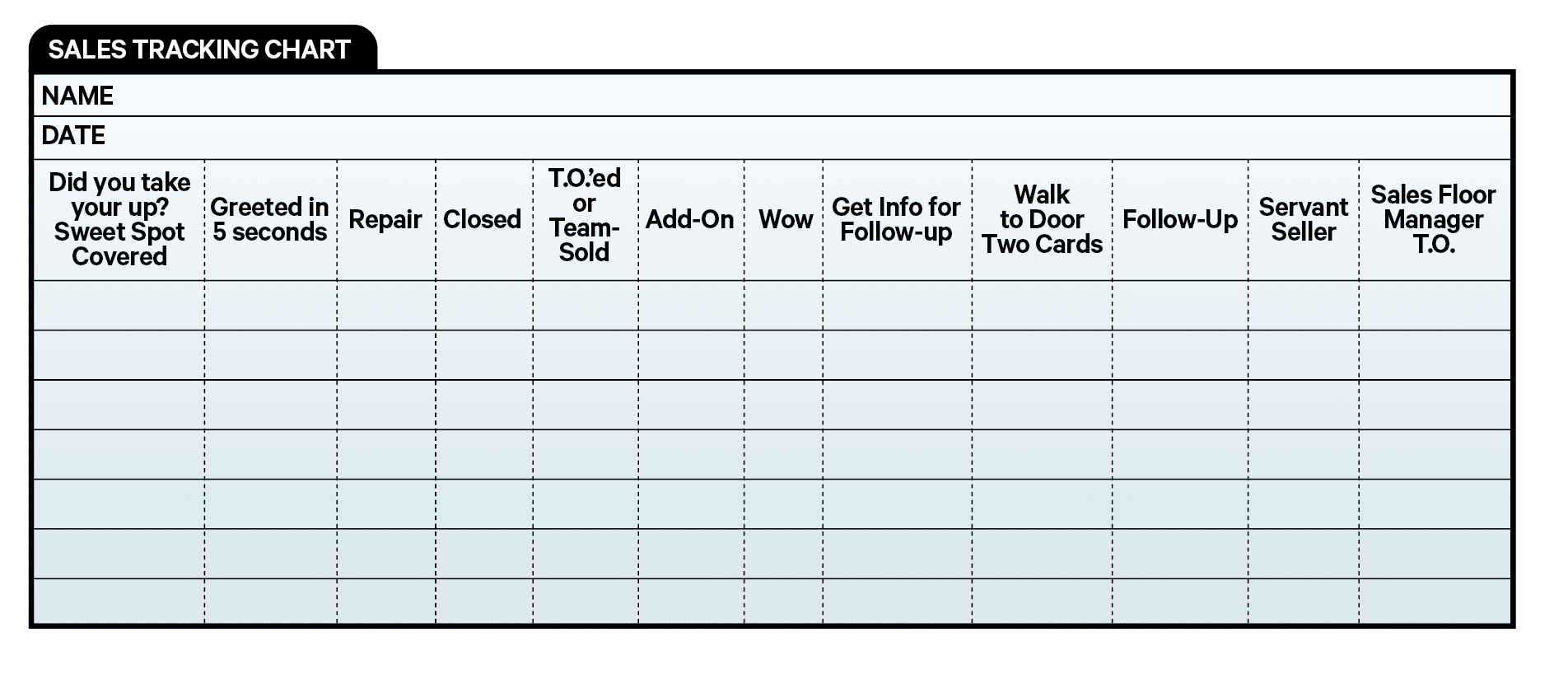THE AVERAGE CLOSING ratio in U.S. jewelry stores is 27-33 percent. How can you improve upon that? The answer can vary not only by store, but by salesperson. That’s why I’ve developed the sales tracking chart you see illustrated to the right.
Every morning, each salesperson should pick up a new form. On it, they will track every sales opportunity they have for that day: every battery client, every repair, every sales presentation. Each area should be marked “yes” or “no.” At the end of the day (and measured over time), you will discover where you need to do the most training.

The first two areas are self-explanatory: Was the “sweet spot” (10-15 feet inside the front door to the right of the customer) covered, and was the customer greeted within five seconds by the team member standing there? Next, was the customer there for a repair?
The fourth box tracks whether or not the sale was closed, and the next column tracks if the client was T.O.’ed or team-sold. Assuming they were, the salesperson should also record who came in to help. Now the manager can track who each salesperson has the most success working with.
Write “yes” in the next column if you close an add-on sale. Remember, add-on sales only take 30 seconds because the client is in a buying mood. Try for a 10 percent or better closing ratio with add-ons.
Advertisement
Write “yes” in the “Wow” column if you show the client an incredible diamond, piece of jewelry or beautiful timepiece before they leave. People buy on impulse all the time, and wowing is something your competitors never do.
There are also columns for gathering information, walking the client to the door and giving him or her two business cards, and follow-up after the sale. Then there is a column for “servant seller”. This is a sales associate who serves as a runner so that the primary salesperson doesn’t have to leave the client. The servant seller can go in the back to polish jewelry, bring needed tools or items, or serve a beverage. Mark “yes” if someone served in that capacity. The last column is whether the salesperson called in the sales manager or owner for a team-sell.
Your salespeople should fill this out right away after they finish with each client. It only takes a few seconds. Always fill it out with total honesty. If they don’t fill it out accurately, you don’t get the information you need for training. If you’re not honest with yourself, you can’t grow in the areas of your weaknesses.
The chart allows you to set goals for team-selling, wowing, adding on and changing bad habits. Most importantly, it changes the client’s experience.